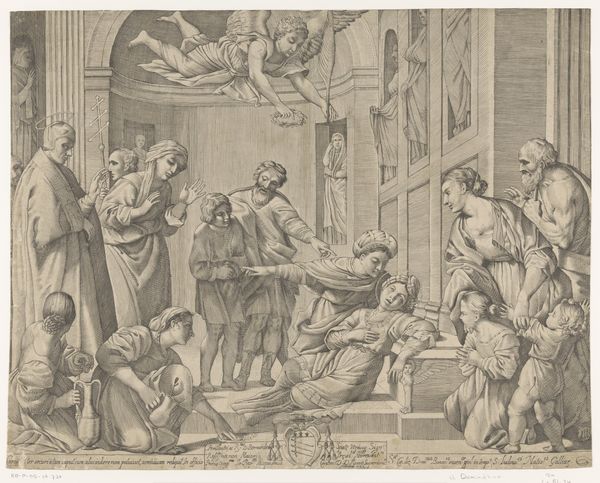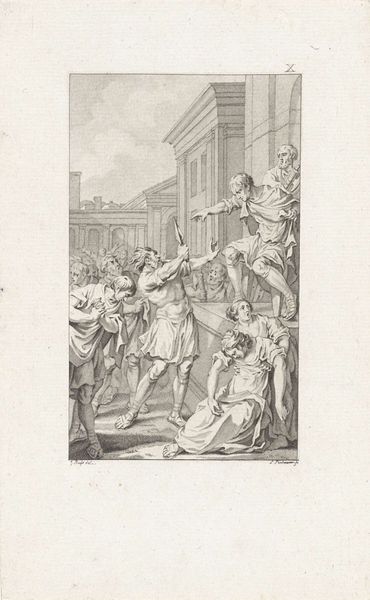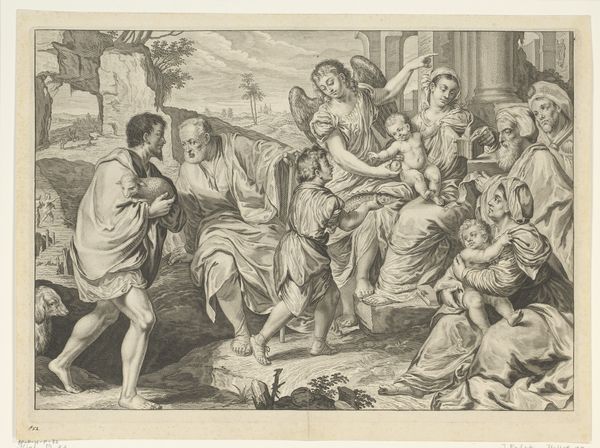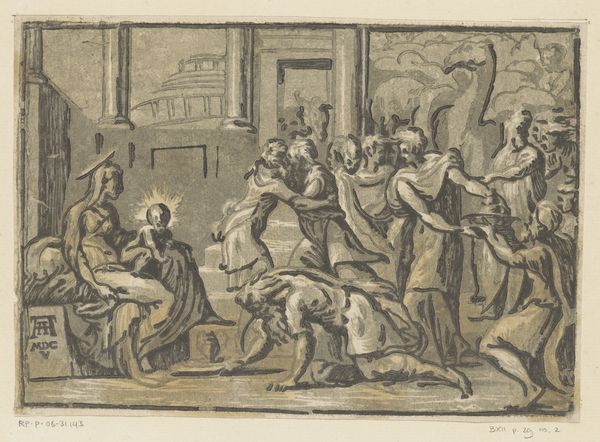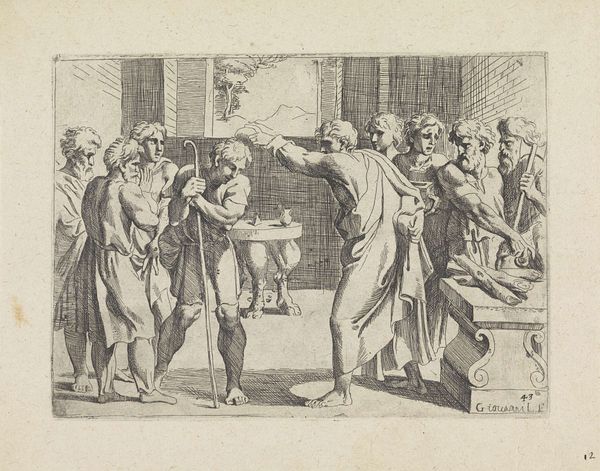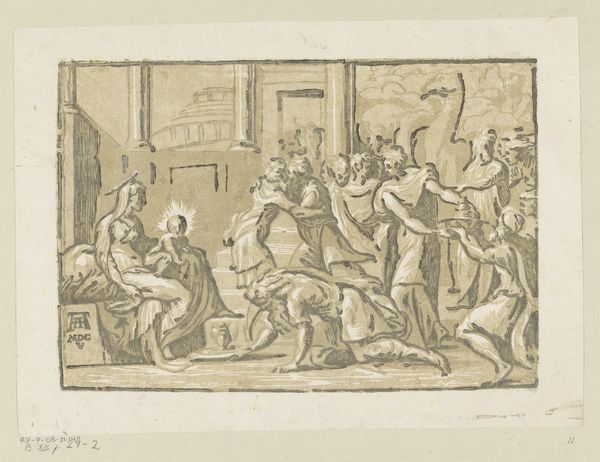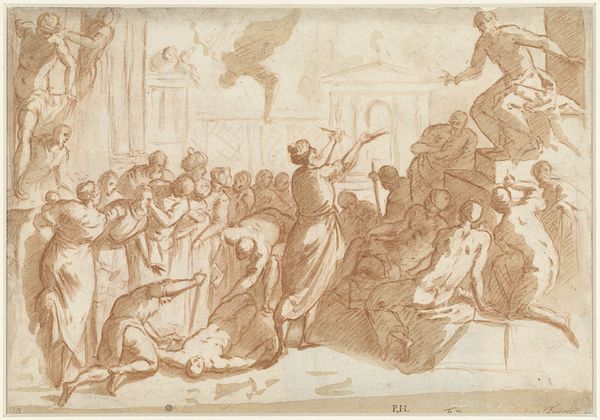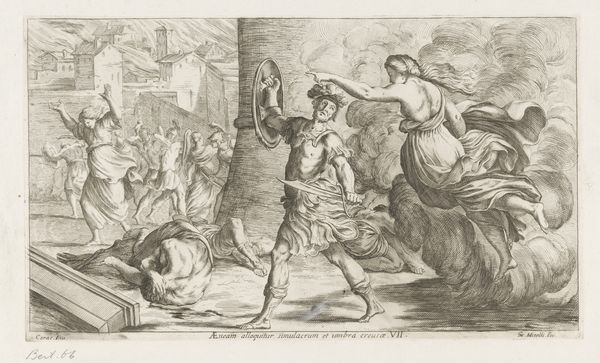
print, engraving
#
narrative-art
#
baroque
# print
#
figuration
#
history-painting
#
engraving
Dimensions: height 271 mm, width 327 mm
Copyright: Rijks Museum: Open Domain
François Collignon created this print, "Weldoener die geld uitdeelt aan de armen," sometime in the 17th century. During this period, stark social inequalities prevailed across Europe, deeply influencing artistic creation. Collignon's etching reflects these disparities through the central figure, presumably a wealthy benefactor, distributing alms to an assembly of impoverished individuals. The composition offers a glimpse into the lives of those marginalized by economic hardship. The bodies of the poor are rendered with a realism that invites empathy, challenging viewers to confront the human cost of inequality. Yet, we must ask, how does charity function in this era? How does it serve to alleviate or perhaps mask the deep structural problems of economic inequality? Consider the historical and cultural implications of who gets to give and who is forced to receive. This image captures a moment of transaction, but what does it tell us about the long-term realities of poverty and power? Collignon's work encourages us to reflect on the complexities of charity.
Comments
No comments
Be the first to comment and join the conversation on the ultimate creative platform.
